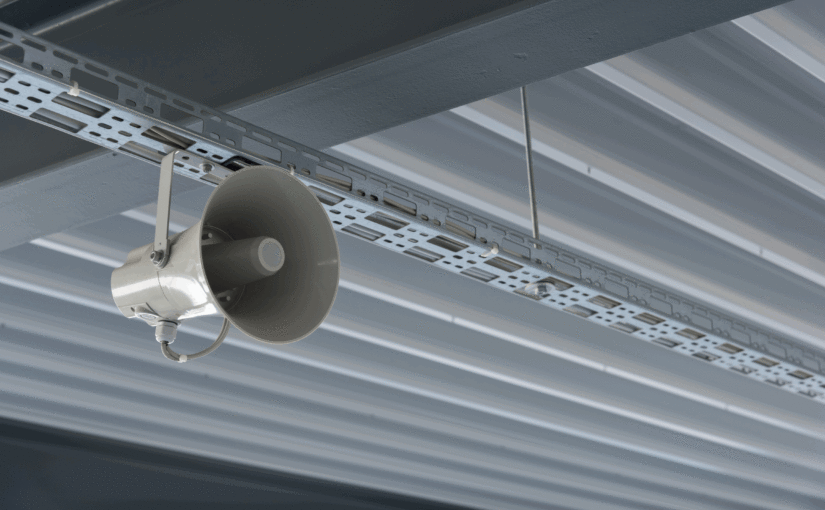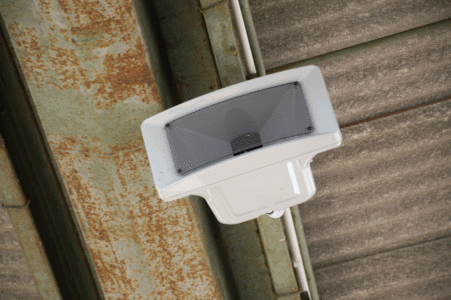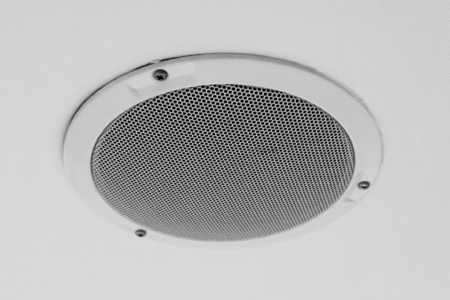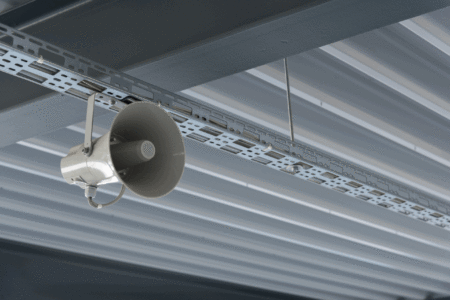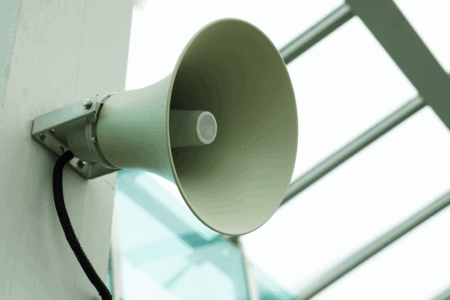Speaker Types
- Ceiling Speakers — typically found in dropped ceilings in officesand stores.
- Wall Baffles — where ceiling height is prohibitive or ceiling speakers are not practical.
- Horns — for outdoors or noisy areas (e.g. warehouse, dock area).
Ceiling Mount :
Because of their cone-shaped spread of sound (referred to as dispersion), ceiling speakers cover more area when the ceiling height is greater. Given this fairly constant dispersion, increasing the speaker volume does not increase area coverage, although it does allow the system to overcome higher ambient noise levels. The area coverage factor remains about the same for all 8” ceiling speakers.
One simple to use rule-of-thumb will allow you to determine roughly the number of speakers to use in any single open area: Space speakers at twice the ceiling height distance.
Wall Baffles :
Wall baffles are used where ceiling height is prohibitive, or where ceiling speakers are not practical. Wall baffles, too, have fairly constant dispersion of sound and the rules for layout and placement are basically the same. However, because they are designed to project forward, square footage coverage ratings are less applicable with wall baffles. Forward coverage and spacing are more important. Whenever possible, it is best to aim all wall baffle speakers in the same direction, as this provides for both better coverage and higher intelligibility.
Fortunately, most spaces have pillars or posts that simplify the mounting and determine the spacing of these types of speakers
Horn Speakers :
Where are they used?
- Outdoors.
- Any weather/environment exposed area, i.e., outdoors, in freezers, and in heat-affected areas.
- Indoors where high ambient noise exists.
- Indoors where large area coverage is necessary and where aesthetics do not require decorative ceiling or wall baffle speakers.
Desired mounting height, barring obstructions, is 15 to 20 feet, with the speakers angled downward towards the listening area.

